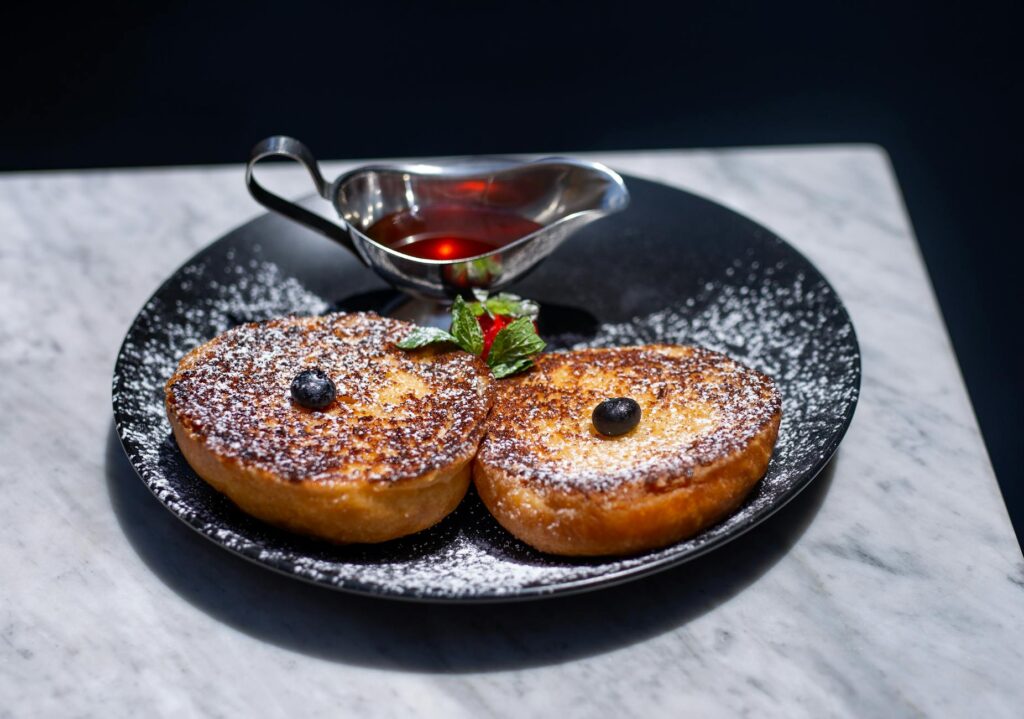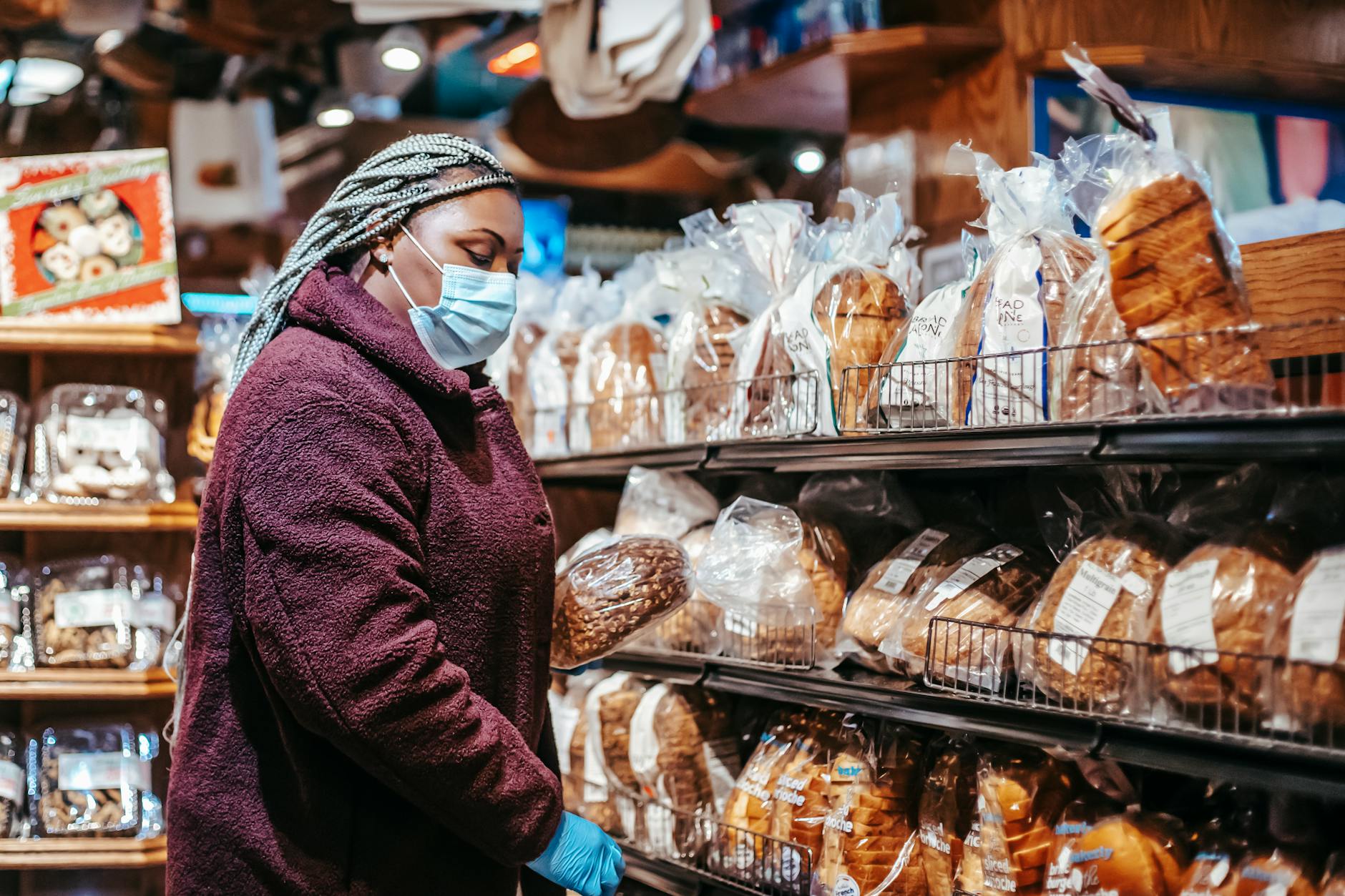
Have you ever sunk your teeth into a slice of French toast that was disappointingly soggy or bland? 😕 You’re not alone. The secret to mouthwatering French toast lies in one crucial element: the bread. But with so many options lining bakery shelves, how do you choose the perfect loaf for your breakfast masterpiece?
Fear not, French toast enthusiasts! 🍞✨ We’re about to embark on a delicious journey to discover the ultimate bread for your French toast creations. From classic choices to unexpected alternatives, we’ll explore the qualities that make certain breads shine in this beloved breakfast dish. You’ll learn how to prep your bread like a pro and even discover exciting pairings for different French toast styles.
So, grab your apron and get ready to elevate your French toast game! In this post, we’ll dive into the top bread choices, uncover surprising options you might not have considered, and share insider tips for achieving French toast perfection. Whether you’re a weekend brunch aficionado or a breakfast-for-dinner devotee, you’re about to become the French toast expert in your circle. Let’s slice into the world of French toast breads and find your new favorite!

Qualities of the Perfect French Toast Bread
When it comes to creating the ultimate French toast experience, choosing the right bread is crucial. Let’s explore the key qualities that make a bread perfect for this beloved breakfast dish.
A. Optimal thickness for absorption
The ideal bread for French toast should be thick enough to soak up the egg mixture without falling apart. You’ll want slices that are:
- At least 3/4 inch to 1 inch thick
- Sturdy enough to hold their shape when soaked
- Able to absorb the custard mixture evenly
A thicker slice allows for a crispy exterior while maintaining a soft, custardy interior. This is why many prefer using thick-cut bread for French toast or even slicing their own from a whole loaf.
B. Ideal texture for crispy exterior
The texture of your chosen bread plays a significant role in achieving that perfect golden-brown crust. Look for bread with:
- A slightly dense crumb structure
- Minimal large air pockets
- A soft but not too delicate texture
These characteristics ensure that your French toast develops a crispy exterior when cooked, while still maintaining a tender inside. Breads like brioche and challah are excellent choices for achieving this ideal texture.
C. Flavor profile that complements toppings
The bread you choose should have a flavor that enhances, not overpowers, your French toast toppings. Consider these flavor aspects:
| Bread Type | Flavor Profile | Best Paired With |
|---|---|---|
| Brioche | Rich, buttery | Fresh berries, maple syrup |
| Challah | Slightly sweet | Cinnamon sugar, whipped cream |
| Sourdough | Tangy, complex | Savory toppings, fruit compotes |
A bread with a subtle sweetness, like brioche or challah, can complement a wide range of toppings without competing for flavor dominance. However, if you’re feeling adventurous, a sourdough French toast can offer an interesting twist with its tangy notes.
Remember, the best bread for French toast should strike a balance between absorbing the custard, crisping up nicely, and providing a complementary flavor base for your chosen toppings. With these qualities in mind, you’re well on your way to creating the perfect French toast experience.

Top Bread Choices for French Toast
A. Classic white bread: A timeless favorite
You can’t go wrong with classic white bread for your French toast. Its neutral flavor profile allows the egg mixture to shine, while its soft texture soaks up the custard beautifully. Opt for a thick-cut variety to ensure your French toast doesn’t become soggy. White bread is readily available and budget-friendly, making it a convenient choice for your breakfast adventures.
B. Brioche: Rich and buttery option
If you’re looking to elevate your French toast game, brioche is your go-to bread. This French bread is enriched with eggs and butter, resulting in a deliciously rich and tender texture. When you use brioche for French toast, you’ll enjoy a luxurious, melt-in-your-mouth experience. The bread’s subtle sweetness complements the egg mixture perfectly, creating a harmonious balance of flavors.
C. Challah: Eggy and slightly sweet
Challah, a traditional Jewish braided bread, is another excellent choice for French toast. Its eggy flavor and slightly sweet taste make it a natural fit for this beloved breakfast dish. The bread’s dense yet soft texture allows it to hold up well when soaked in the egg mixture, resulting in a perfectly crisp exterior and a custardy interior.
D. French baguette: Crusty exterior, soft interior
For a unique twist on traditional French toast, consider using a French baguette. The bread’s crusty exterior provides a delightful crunch, while its soft interior soaks up the egg mixture beautifully. Slice the baguette on a diagonal to create larger pieces that are perfect for French toast.
Here’s a comparison of these bread options:
| Bread Type | Texture | Flavor Profile | Best For |
|---|---|---|---|
| White Bread | Soft, uniform | Neutral | Classic, everyday French toast |
| Brioche | Rich, tender | Buttery, slightly sweet | Indulgent, gourmet French toast |
| Challah | Dense, soft | Eggy, mildly sweet | Traditional, flavorful French toast |
| French Baguette | Crusty exterior, soft interior | Mild, wheaty | Rustic, textured French toast |
When choosing your bread, consider these factors:
- Thickness of the slices
- Staleness (slightly stale bread works best)
- Flavor compatibility with your toppings
- Desired texture of the final dish
Now that you’re familiar with these top bread choices, let’s explore some unexpected options that can add a unique twist to your French toast.

Unexpected Bread Options to Try
Now that we’ve covered the classic choices, let’s explore some unique bread options that can elevate your French toast game. These unexpected alternatives will add exciting flavors and textures to your breakfast table.
A. Cinnamon raisin bread for added sweetness
You’ll love the extra layer of sweetness and complexity that cinnamon raisin bread brings to your French toast. The built-in cinnamon flavor complements the egg mixture perfectly, while the raisins add bursts of natural sweetness and a chewy texture. This option is particularly great if you’re looking to reduce the amount of syrup you use.
B. Sourdough for tangy twist
For a more sophisticated French toast experience, try using sourdough bread. Its tangy flavor profile and sturdy texture make it an excellent choice. The slight acidity of sourdough creates a beautiful contrast with the sweet egg mixture, resulting in a more balanced and interesting flavor. Plus, sourdough’s ability to absorb the custard while maintaining its structure ensures a perfectly crispy exterior and a soft, custardy interior.
C. Whole wheat for healthier alternative
If you’re health-conscious but still want to indulge in French toast, whole wheat bread is your go-to option. It offers more fiber and nutrients compared to white bread, making your breakfast a bit more nutritious. The nutty flavor of whole wheat adds depth to your French toast, and its hearty texture stands up well to the egg mixture.
Here’s a comparison of these unexpected bread options:
| Bread Type | Flavor Profile | Texture | Best Paired With |
|---|---|---|---|
| Cinnamon Raisin | Sweet, spiced | Soft with chewy raisins | Cream cheese topping |
| Sourdough | Tangy, complex | Crispy exterior, soft interior | Berry compote |
| Whole Wheat | Nutty, earthy | Hearty, slightly dense | Maple syrup and nuts |
Next, we’ll dive into the crucial steps for preparing your chosen bread to achieve the perfect French toast texture.

Preparing Your Bread for French Toast
Now that you’ve chosen the perfect bread for your French toast, it’s time to prepare it for culinary greatness. The right preparation can elevate your French toast from good to extraordinary.
A. Ideal staleness level
You might be surprised to learn that slightly stale bread is actually ideal for French toast. Why? Stale bread absorbs the egg mixture better without falling apart. Here’s a quick guide to achieving the perfect staleness:
| Bread Type | Ideal Staleness Time |
|---|---|
| Brioche | 1-2 days |
| Challah | 1-2 days |
| Sourdough | 2-3 days |
| Texas Toast | 1 day |
B. Slicing techniques for even cooking
The way you slice your bread can make a big difference in how evenly your French toast cooks. Follow these tips:
- Aim for slices about 3/4 to 1 inch thick
- Cut at a slight angle for more surface area
- Ensure uniformity in thickness for consistent cooking
C. Pre-toasting method for extra crispiness
For that extra crispy exterior you crave, try pre-toasting your bread:
- Lightly toast your bread slices in a toaster or oven
- Let them cool completely
- Then proceed with your French toast recipe
This method works particularly well with thicker breads like Texas toast or homemade thick-cut bread. The pre-toasting helps to remove excess moisture, resulting in a crispier final product.
With your bread properly prepared, you’re now ready to move on to the exciting world of French toast variations and styles.
Pairing Breads with Different French Toast Styles
Now that we’ve explored various bread options, let’s delve into how to pair them with different French toast styles for a truly memorable breakfast experience.
A. Stuffed French Toast Breads
When it comes to stuffed French toast, you’ll want to choose breads that can hold up to the filling without falling apart. Here are some excellent options:
- Brioche: Its rich, buttery texture makes it perfect for sweet fillings
- Challah: The dense structure can handle hefty stuffings
- Texas Toast: Its thickness is ideal for creating pockets
| Bread Type | Best Fillings |
|---|---|
| Brioche | Cream cheese, fruit compotes |
| Challah | Nutella, peanut butter |
| Texas Toast | Savory options like ham and cheese |
B. French Toast Casserole Options
For a French toast casserole, you’ll want bread that can soak up the egg mixture without turning mushy. Consider these choices:
- Sourdough: Its tangy flavor adds depth to the casserole
- Baguette: When cubed, it creates a delightful texture
- Cinnamon raisin bread: Adds a built-in sweetness and spice
C. Savory French Toast Bread Choices
If you’re in the mood for a savory twist on French toast, you’ll want to select breads that complement savory flavors:
- Whole grain bread: Adds a nutty flavor and hearty texture
- Sourdough: Its tanginess pairs well with herbs and cheese
- Rye bread: Offers a robust flavor that stands up to savory toppings
Remember, the key to perfect savory French toast is balancing the bread’s flavor with your chosen toppings and seasonings.
Next, we’ll wrap up with some final tips to ensure your French toast is always a hit, no matter which bread you choose.

As you embark on your French toast journey, remember that the bread you choose plays a crucial role in creating the perfect dish. From classic options like brioche and challah to unexpected choices like sourdough or even banana bread, each variety brings its unique flavors and textures to the table. Don’t be afraid to experiment with different breads to find your ideal French toast experience.
Whether you’re preparing a indulgent weekend brunch or a quick weekday breakfast, selecting the right bread and preparing it properly will elevate your French toast game. Consider the style of French toast you’re aiming for and pair it with the appropriate bread to achieve the best results. With these tips in mind, you’re well on your way to becoming a French toast master. Happy cooking!

